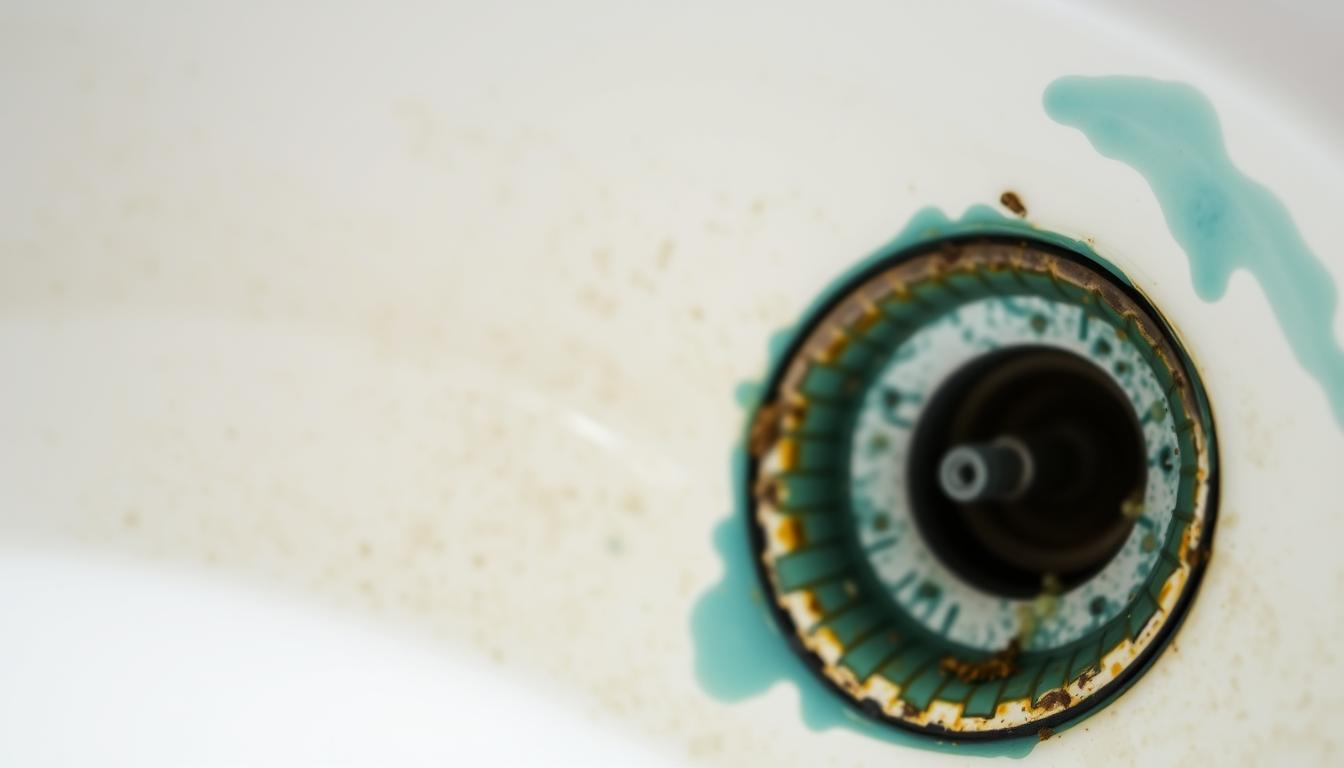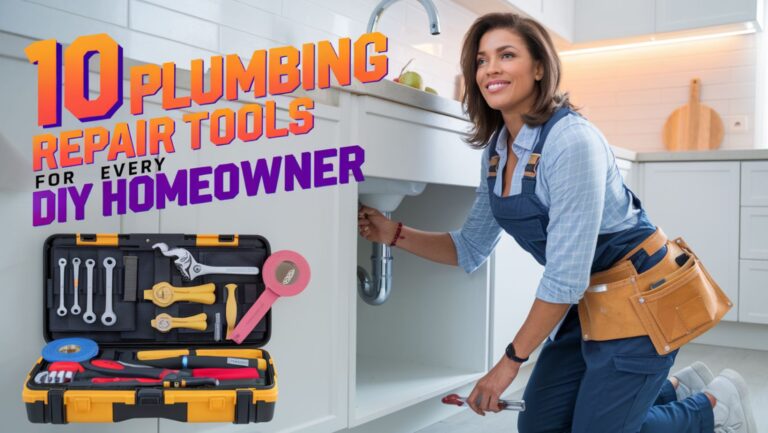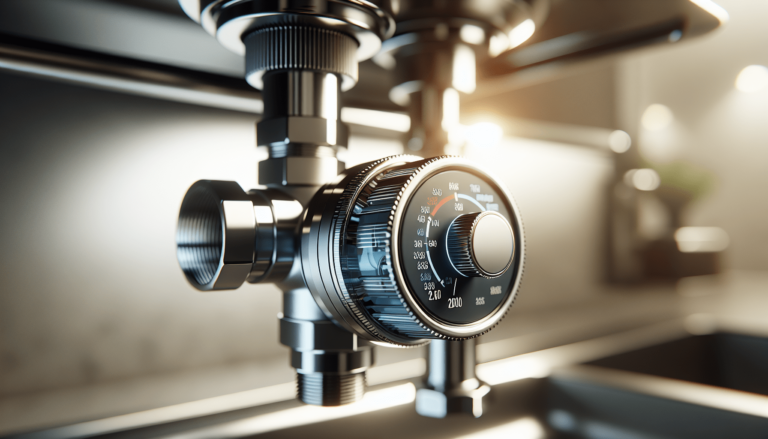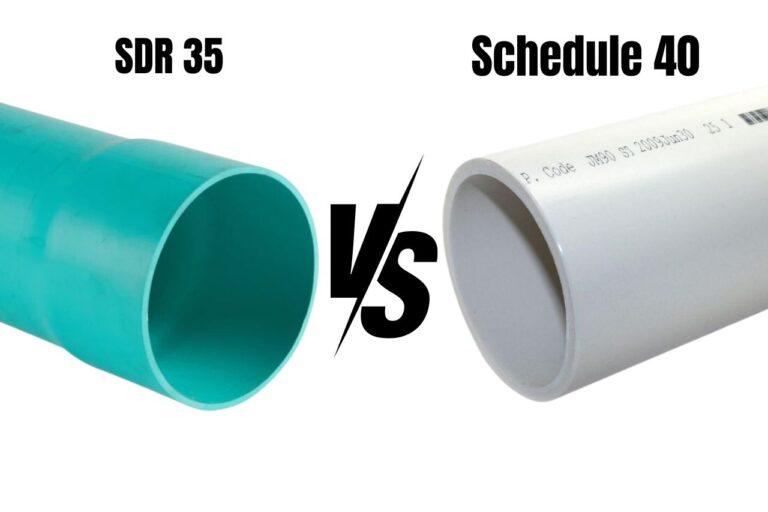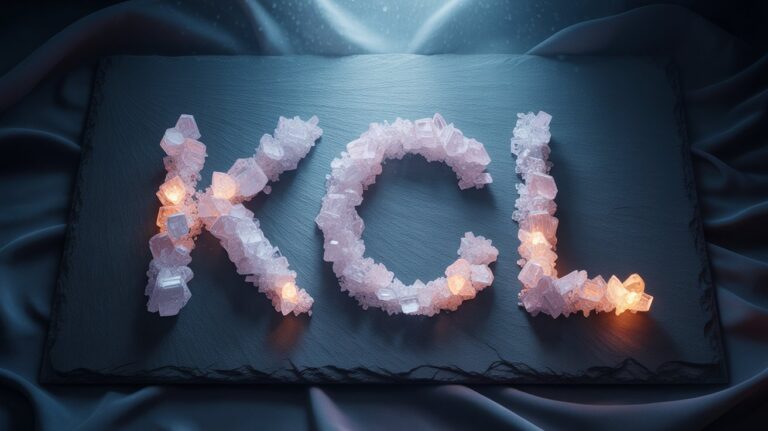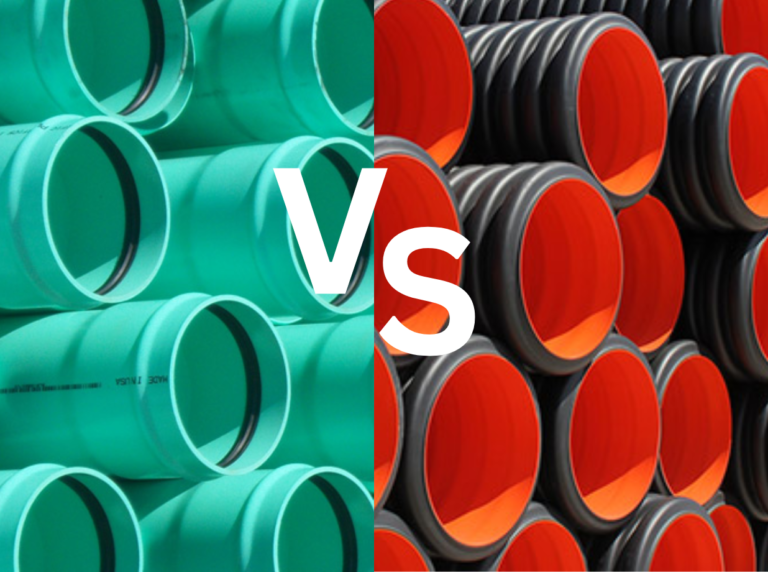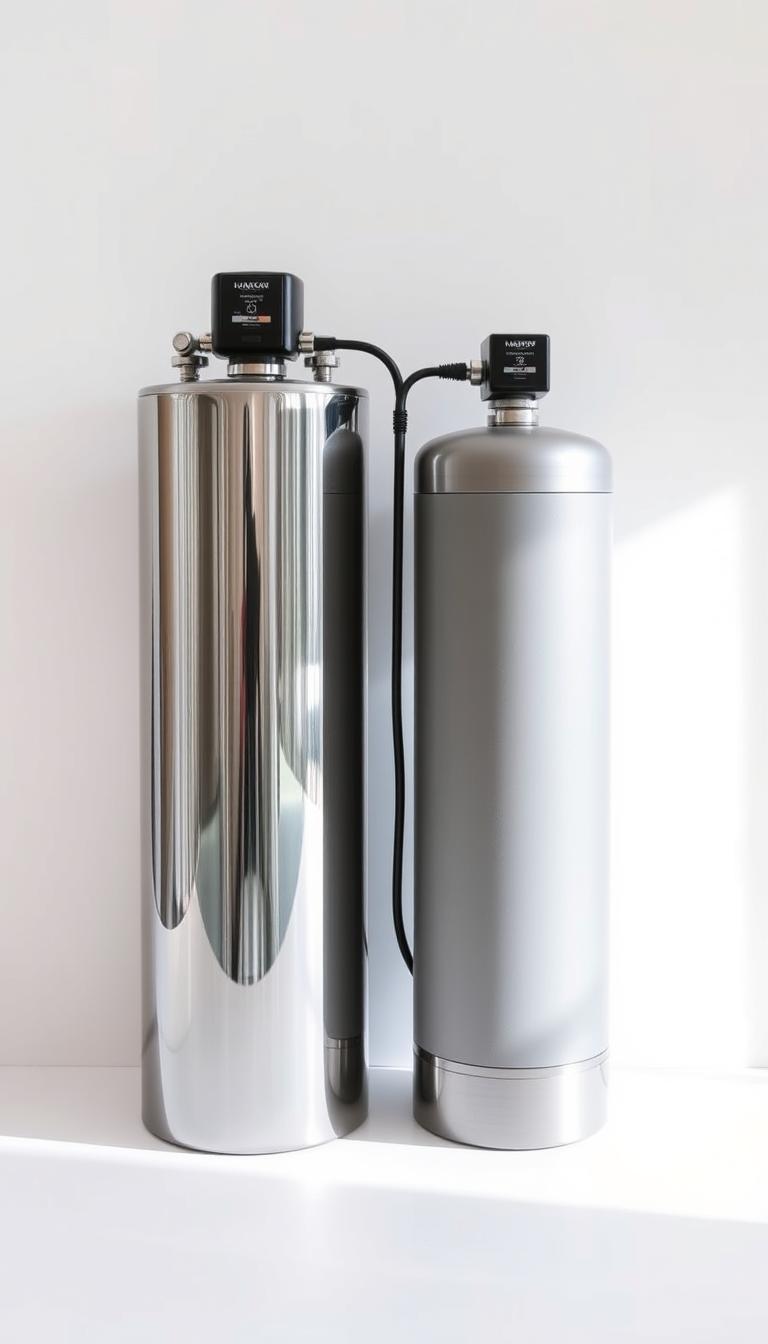How to Identify and Fix Acidic Water Problems in Your Home
If you notice blue-green stains on your fixtures or detect a metallic taste in your water, your home might have acidic water problems. Low pH water can silently damage your plumbing system, leach harmful metals into your drinking water, and cause expensive repairs if left untreated. This comprehensive guide will help you diagnose acidic water issues and implement effective solutions before permanent damage occurs.
What Is Acidic Water?
Acidic water has a pH level below 7.0 on the pH scale, with water below 6.5 considered problematic for home plumbing systems. The pH scale ranges from 0 (extremely acidic) to 14 (extremely alkaline), with 7 being neutral. The EPA recommends drinking water should maintain a pH between 6.5 and 8.5 for optimal safety and taste.
Most well water becomes acidic when rainwater (naturally acidic at around pH 5.6) absorbs carbon dioxide as it falls, forming a weak carbonic acid. If this water doesn’t pick up enough neutralizing minerals like calcium as it travels through soil and rock, it can remain acidic when it reaches your well.

Important: While slightly acidic water (pH 6.0-6.5) may not pose immediate health risks, it can gradually damage plumbing and potentially introduce harmful metals into your water supply.
Signs You May Have Acidic Water
Before investing in testing equipment, you can look for these common indicators of acidic water in your home:
Visual and Taste Indicators
- Blue-green stains around drains and fixtures
- Reddish-brown stains (from iron pipes)
- Metallic or sour taste in drinking water
- Clear water that turns blue-green when standing
- Pinhole leaks in copper plumbing
Plumbing and Appliance Issues
- Frequent plumbing repairs and leaks
- Rapidly deteriorating water heaters
- Corroded fixtures and appliance connections
- Decreased water pressure from pipe corrosion
- Discolored laundry (particularly blues and greens)

Testing Your Water for Acidity
To confirm if you have acidic water, you need to test your water’s pH level. While visual signs provide clues, only proper testing can determine the severity of the problem and guide your treatment approach.
DIY Testing Options
For a quick assessment, you can use:
- pH Test Strips – Affordable and easy to use, providing a basic indication of your water’s pH level
- Digital pH Meters – More accurate than strips but require calibration
- Home Test Kits – Comprehensive kits that test for pH and other water quality parameters
Get Accurate Results with Professional Testing
For the most reliable assessment of your water’s pH and potential metal contamination, consider a comprehensive water test from a certified laboratory.
Professional Testing
For the most accurate results, especially if you suspect severe acidity or metal contamination, consider:
- Sending samples to a certified water testing laboratory
- Hiring a water treatment professional to test onsite
- Contacting your local health department for testing resources

Testing Tip: When collecting water samples, always use clean containers and test the water immediately after collection for the most accurate pH reading. For well owners, the EPA recommends testing your water quality annually.
How to Fix Acidic Water: Treatment Options
Once you’ve confirmed your water is acidic, you’ll need to choose an appropriate treatment method based on your pH level, water usage, and budget. Here are the most effective solutions for neutralizing acidic water:
For Moderate Acidity (pH 5.5-6.9)
Calcite Neutralizer
A calcite neutralizer is the most common and cost-effective solution for moderately acidic water. These systems use crushed limestone (calcium carbonate) media to gradually raise your water’s pH as it passes through.
Advantages
- Self-limiting (won’t over-correct pH)
- Low maintenance requirements
- No electricity needed
- Affordable initial investment ($500-$1,000)
- Simple annual media replacement
Limitations
- Only raises pH by about 1 point
- Increases water hardness
- Requires backwashing in some models
- Not effective for severely acidic water
- Media must be replenished annually
Calcite neutralizers come in two main designs:
- Backwashing systems – Periodically clean themselves but waste water
- Upflow systems – More efficient with no backwashing required

For Severe Acidity (pH Below 5.5)
Calcite/Magnesium Oxide Blend
For water with pH levels between 5.0-5.5, a blend of calcite and magnesium oxide (often sold as Corosex) provides stronger neutralization capabilities.
Caution: You should use magnesium oxide sparingly (typically 10-20% mixed with calcite) as it can over-correct pH levels and potentially cause a laxative effect if consumed in high concentrations.
This combination can raise pH by approximately 1.5 points, making it suitable for more acidic conditions than calcite alone can handle.
Chemical Injection Systems
For severely acidic water (pH below 5.0), a chemical injection system using soda ash (sodium carbonate) or caustic soda (sodium hydroxide) is typically required.
These systems use a metering pump to inject a precise amount of neutralizing solution into your water supply before it enters your home.
Safety Warning: You should wear gloves and eye protection when handling soda ash or caustic soda. These chemicals can cause skin irritation and eye damage if not handled properly.
- Soda Ash – Effective for pH levels between 4.5-5.5
- Caustic Soda – Required for extremely acidic water (pH below 4.5)

Comparison of Acidic Water Treatment Options
| Treatment Method | Effective pH Range | Initial Cost | Annual Maintenance | Installation Difficulty | Best For |
| Calcite Neutralizer | 6.0-6.9 | $500-$1,000 | $50-$100 (media) | Moderate | Most households with mild acidity |
| Calcite/Corosex Blend | 5.0-6.0 | $600-$1,200 | $75-$150 (media) | Moderate | Homes with moderate acidity |
| Soda Ash Injection | 4.5-5.5 | $1,000-$1,800 | $150-$300 (chemicals) | Complex | Severe acidity requiring precise control |
| Caustic Soda Injection | Below 4.5 | $1,200-$2,000 | $200-$350 (chemicals) | Complex | Extremely acidic water conditions |
Installation Process for Acid Neutralizers
Installing an acid neutralizer system typically takes 4-6 hours for a professional or 6-8 hours for a DIY project. Here’s what the process involves:
DIY Installation Steps
- Shut off your main water supply
- Install a bypass valve for system maintenance
- Position the neutralizer tank after any sediment filters but before other treatment systems
- Connect inlet and outlet plumbing with appropriate fittings
- For backwashing systems, connect a drain line
- Fill the tank with the appropriate neutralizing media
- Slowly open the water supply to fill the tank
- Check for leaks and proper operation
Professional Installation Benefits
- Proper sizing based on your water flow and usage
- Correct media selection for your specific water chemistry
- Integration with existing water treatment equipment
- Warranty coverage on parts and labor
- Follow-up water testing to confirm effectiveness
- Guidance on maintenance procedures
Maintaining Your Acid Neutralizer
Proper maintenance is essential to ensure your acid neutralizer continues to protect your plumbing system effectively. Here’s what you need to know:
Media Replacement
The neutralizing media (calcite or calcite/Corosex blend) gradually dissolves as it neutralizes acid in your water. You’ll need to:
- Check media levels every 3-6 months
- Replenish when levels drop below 50%
- Completely replace media annually
Backwashing Systems
If your system includes a backwashing feature:
- Ensure drain line is clear and properly secured
- Verify backwash cycle is functioning correctly
- Adjust backwash frequency based on water usage
- Check for media being discharged during backwash
Chemical Injection Systems
For soda ash or caustic soda systems:
- Check solution levels weekly
- Clean injection point quarterly
- Calibrate pump settings annually
- Replace pump tubing every 1-2 years

Pro Tip: After any maintenance on your acid neutralizer, test your water’s pH to ensure the system is working properly. Aim for a neutral pH between 7.0-7.5 for optimal protection of your plumbing.
Additional Considerations for Acidic Water Treatment
Water Hardness After Neutralization
When you fix acidic water with calcite or similar minerals, you’re adding calcium to your water, which increases water hardness. This can create a new set of challenges:
Signs of Hard Water
- Scale buildup on fixtures and appliances
- Reduced soap lathering
- Spotting on dishes and glassware
- Decreased water heater efficiency
Solutions for Hard Water
- Install a water softener after your neutralizer
- Use a salt-free conditioner for scale prevention
- Consider a dual-tank system that addresses both issues

Metal Contamination Concerns
If your plumbing has been exposed to acidic water for an extended period, you may have metal contamination issues that persist even after neutralizing the pH:
According to the EPA, even low levels of lead exposure can be harmful, especially for children and pregnant women. If your acidic water has been in contact with lead pipes or solder, additional filtration may be necessary even after pH correction.
Consider adding a certified filter for lead and copper if tests show these metals in your water, even after installing a neutralizer.

Troubleshooting Your Acid Neutralizer
Even with proper installation, you might encounter issues with your acid neutralizer system. Here’s how to address common problems:
Water Still Tests Acidic After Treatment
If your water’s pH remains below 7.0 after installation:
- Check if you’re using the correct media for your pH level
- Ensure the system is sized properly for your water flow rate
- Increase contact time by reducing water flow or installing a larger tank
- For severe acidity, consider adding a small percentage of Corosex to your calcite
Pressure Drop After Installation
A significant drop in water pressure could indicate:
- Media bed is clogged with sediment (install a pre-filter)
- Improper sizing of the system for your home’s flow rate
- Valve or bypass issues restricting water flow
- Channeling in the media bed (needs backwashing or redistribution)
Media Being Depleted Too Quickly
If you’re replacing media more often than annually:
- Your water may be more acidic than initially tested
- Water usage might be higher than the system was designed for
- The tank may be undersized for your needs
- Consider a larger system or more frequent maintenance schedule
Water Has Become Too Alkaline
If your pH is testing above 8.5:
- You may have too much Corosex in your blend (reduce to 10% or less)
- Water flow may be too slow, allowing excessive mineral contact
- Consider adjusting your bypass valve to mix in some untreated water
- Switch to a pure calcite media which is self-limiting
When to Call a Professional
While many homeowners can successfully install and maintain basic acid neutralizers, certain situations warrant professional assistance:
Signs You Need Professional Help
- Water with pH below 5.5 (requires specialized treatment)
- Confirmed heavy metal contamination in your water
- Multiple water quality issues beyond just acidity
- Complex plumbing systems or limited installation space
- Neutralizer system not performing as expected after troubleshooting
What to Expect from a Professional
- Comprehensive water testing beyond just pH
- System sizing based on your specific water chemistry and usage
- Integration with existing or recommended treatment equipment
- Proper installation with bypass valves for maintenance
- Follow-up testing to confirm effectiveness
- Maintenance schedule and training

Protecting Your Home from Acidic Water
Addressing acidic water is an investment in your home’s plumbing infrastructure and your family’s health. By testing your water regularly and implementing the appropriate treatment solution, you can prevent costly damage and ensure your water is safe and pleasant to use.
Remember that water treatment is not a one-size-fits-all solution. The right approach depends on your specific water chemistry, usage patterns, and budget considerations.
Start with a comprehensive water test to understand exactly what you’re dealing with, then choose the appropriate neutralization method based on your pH level and other water quality factors. With proper maintenance, your acid neutralizer will provide years of protection for your home’s plumbing system and water quality.
Ready to Fix Your Acidic Water?
Take the first step by testing your water’s pH and contaminant levels with our comprehensive home water test kit.


